
By Sebastien Hayez. Published June 15, 2023
Fonts for Posters
Header poster by Alvaro Donquiles
After our article on typography for publishing, the poster appears as the other essential format of graphic design. But what about appropriate typographic choices? Although its contemporary use is mostly commercial and offers graphically poor examples, the poster remains a privileged medium, linked to great historical achievements. The graphic design student will probably want to create a portfolio where it will demonstrate his talent, his audacity and his creativity. In the poster, typography thus holds the main role.
By the way, before going into detail, don't forget our previous entry on font pairing...
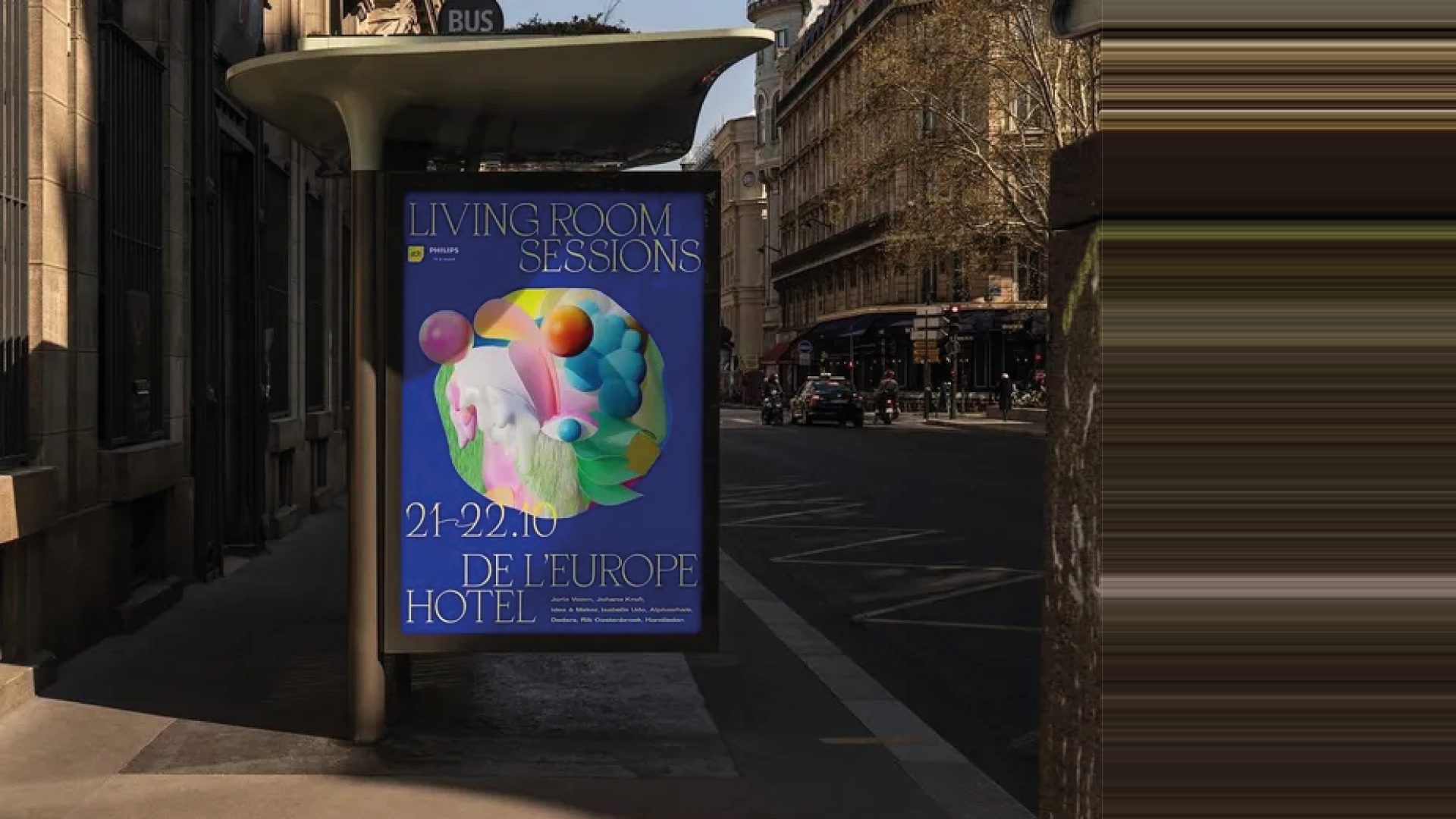
The Living Room Sessions ft. Joris Voorn & Johana Kroft at Hotel De L’Europe were organized by Philips Sound & TV and The Brand Father as part of the Amsterdam Dance Event. Graphic designer Caroline Busson and 3D visual artists Johana Kroft collaborated on the occasion to create this poster in printed and animated versions.
We find a refined used of Apoc alongside the animated 3D forms.
Impact
Success does not wait for the one who sweetly cajoles the onlookers. Success belongs to the one who conquers the public "à la hussarde" or rather, pass me this soldierly term, who rapes it.
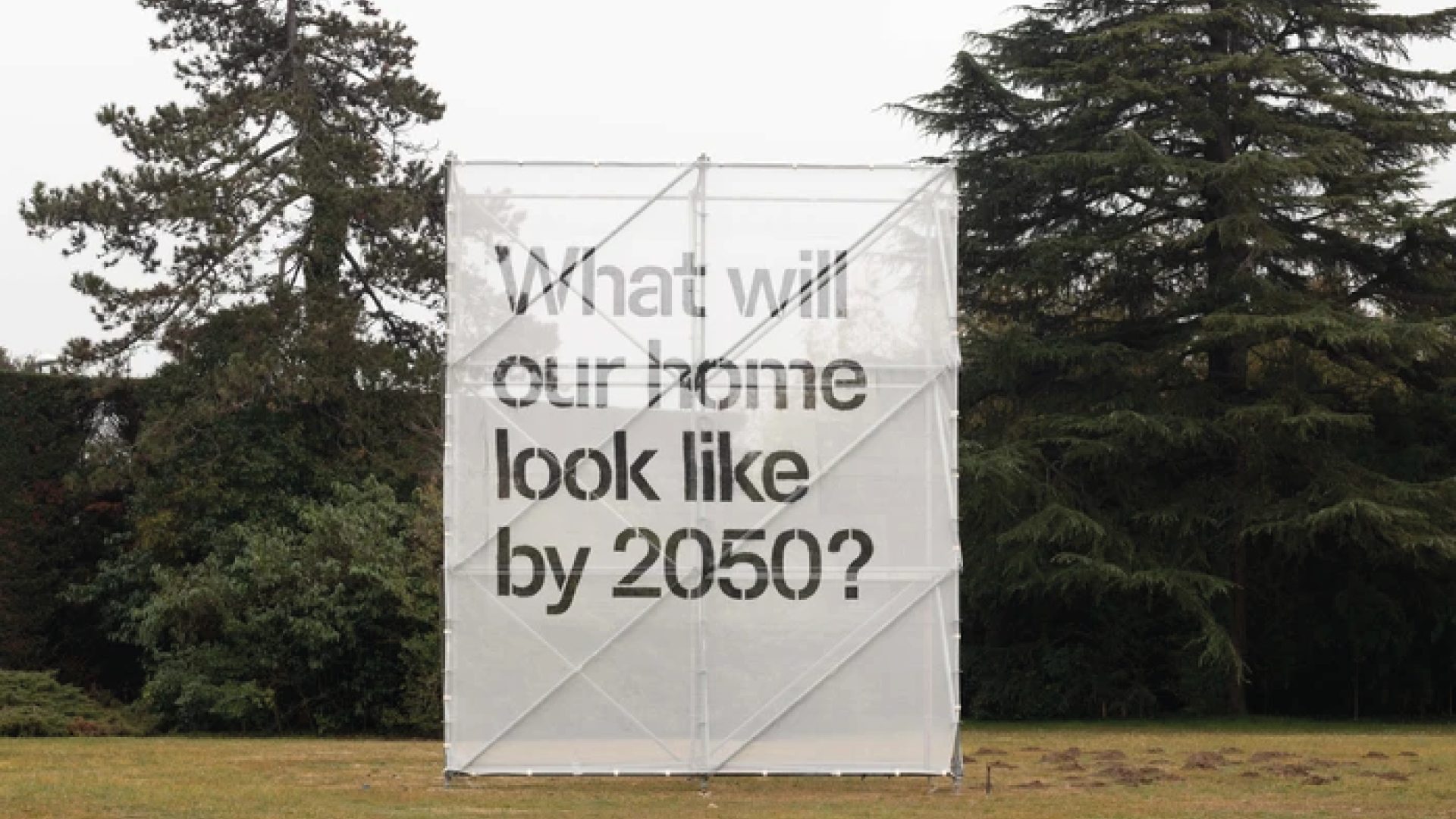
Slussen Stencil doing perfectly the job.
Houses of the Future brings out a reflection on how will the world evolve in the near future and how will we live in it. The emptiness and uncertainty fuse into the hope of being able to reformulate our purpose to save the earth. The installation is part of Later Came Early exhibition at Fabrica research centre in Treviso, Italy. (Via Lucía Peralta)
This is how the young Adolphe Mouron, known as Cassandre, described the strategy used to produce a good poster. The support must impose itself to the eye to be seen and understood quickly.
Moreover, among the typographic families, the variations of weight appeared in parallel with the popularization of the commercial poster in the early nineteenth century: the Didot of the early 1800s flourished on the walls of Paris with as much force as they were rich in weights but also extended version, called Normande (the Norman butter being probably responsible for this weight gain). Bold and Black are thus declined in games of width from the Condensed, Compressed to the Ultra Extended, demonstrating that the text, even distorted, must invade the entire surface of the poster.
Impact, keeping the idea of a slap in the face of the passer-by: the typography is striking by its strength or its obviousness. In this perspective, sans serif typefaces are the best actors, capable of flexibility and strength of play: Arges (48 styles), Osmose (10 styles), Mack (12 styles), Massilia (14 styles), Rules (12 styles), Area (88 styles), Slussen (104 styles with the Stencil and Mono), Surt (60 styles), Digital Sans (14 styles)
To catch the eye, typography is treated as an image and not as information: it is seen first, then read.
If the poster is solely typographic, beyond a certain volume of text, it must be prioritized by variations of size, weight or italics. It is better to highlight a few essential words than to want to say everything and end up saying nothing.In this case, you have two options:
1. Choose a typeface that has a few variants that allow for these nuances of style.
2. Compose a selection of 3 different typefaces that can complement each other. 3 only because more would be too much.
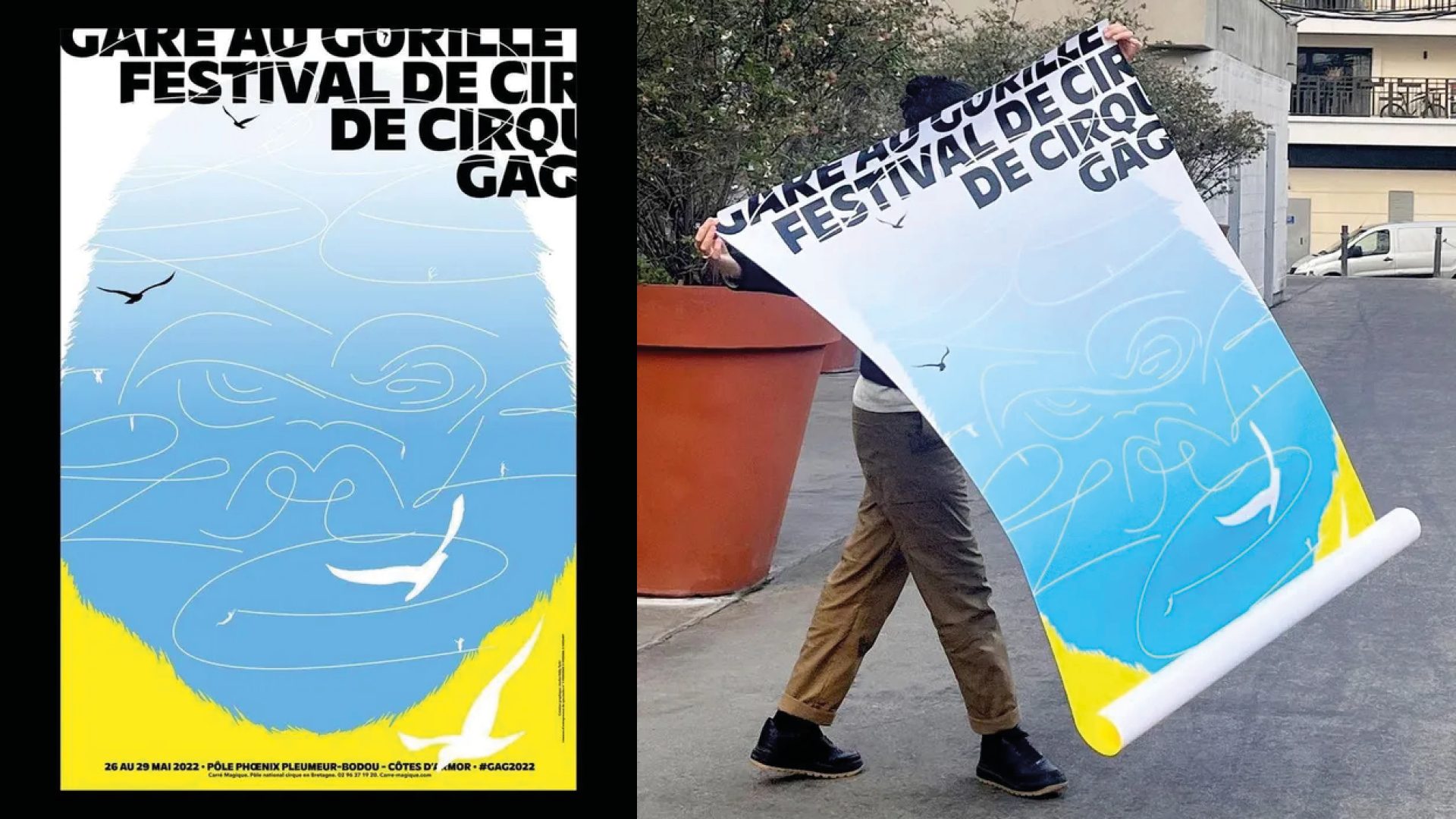
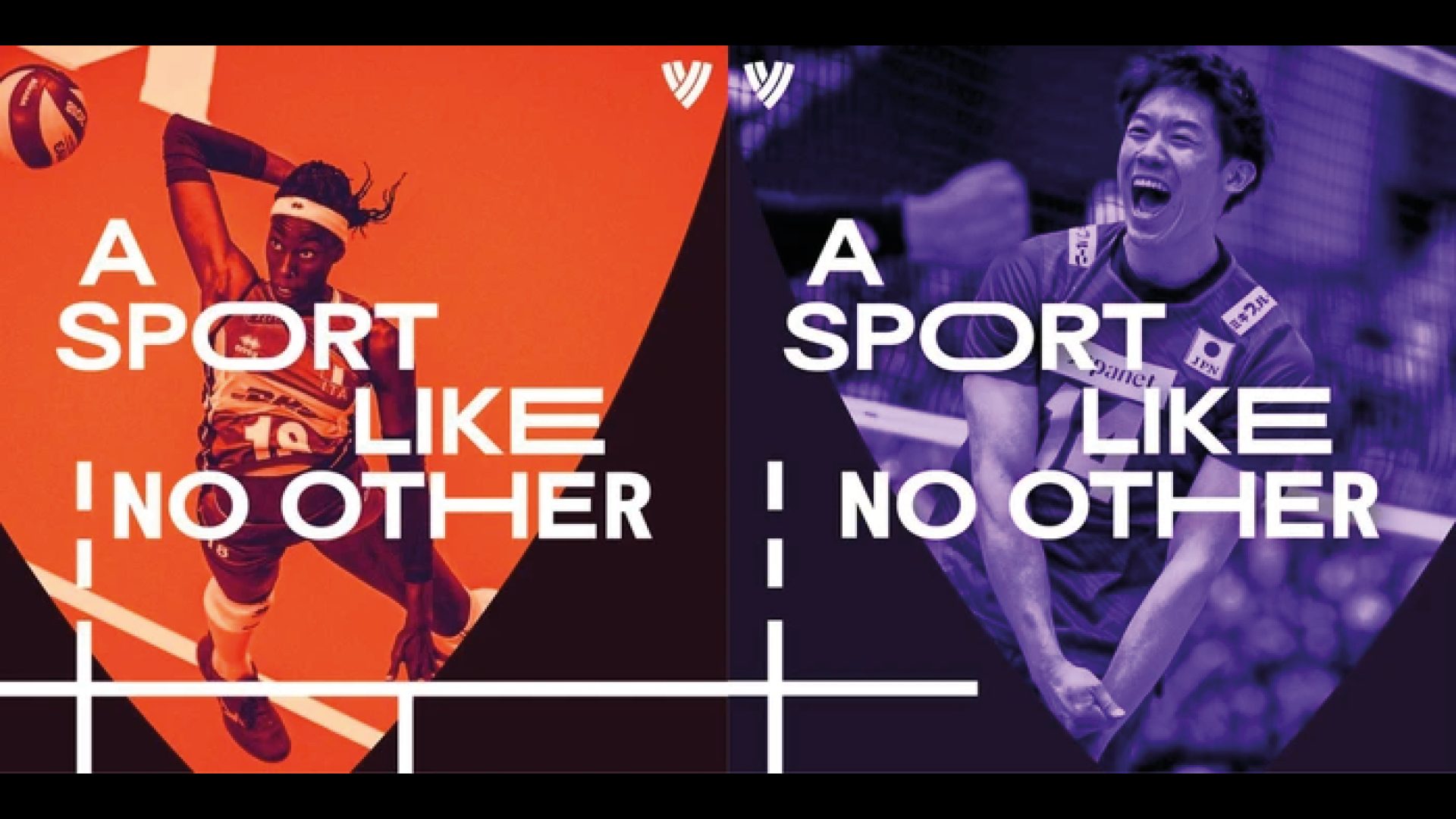
Legibility
But impact is not a simple effect to produce and needs to be well received by the passerby or it will be rejected. Therefore, legibility is the least of the courtesies to get the slap across. It would indeed be counterproductive to use black and extended typography without ensuring its legibility.
Texts composed in overly compressed or extended typography, especially on too small a size, can be seen as a jumble of chaotic shapes.
However, there is no need to select commercial typefaces reserved for publishing: legibility is sometimes a question of microtypography and good calibration of your typesettings. Be careful to keep the line spacing and kerning, do not abuse the distortion of the text, except if it becomes an image of letters to serve your idea.
Finally, a legible typography for a poster is above all a font whose optical corrections are thought for the size of the support. If you can, choose a typeface with a titling variant. At BlazeType, all our productions available in Variable Font have this feature.
As for the secondary texts, of lesser importance, it is up to you to create a font pairing capable of highlighting this role of support. A body typography, less marked but readable, will bring strength to the titling typography.
For the more adventurous, you can learn more about the issue of legibility by reading the entire book The Visible Word by Herbert Spencer, published in 1968 by the Royal College of Arts.
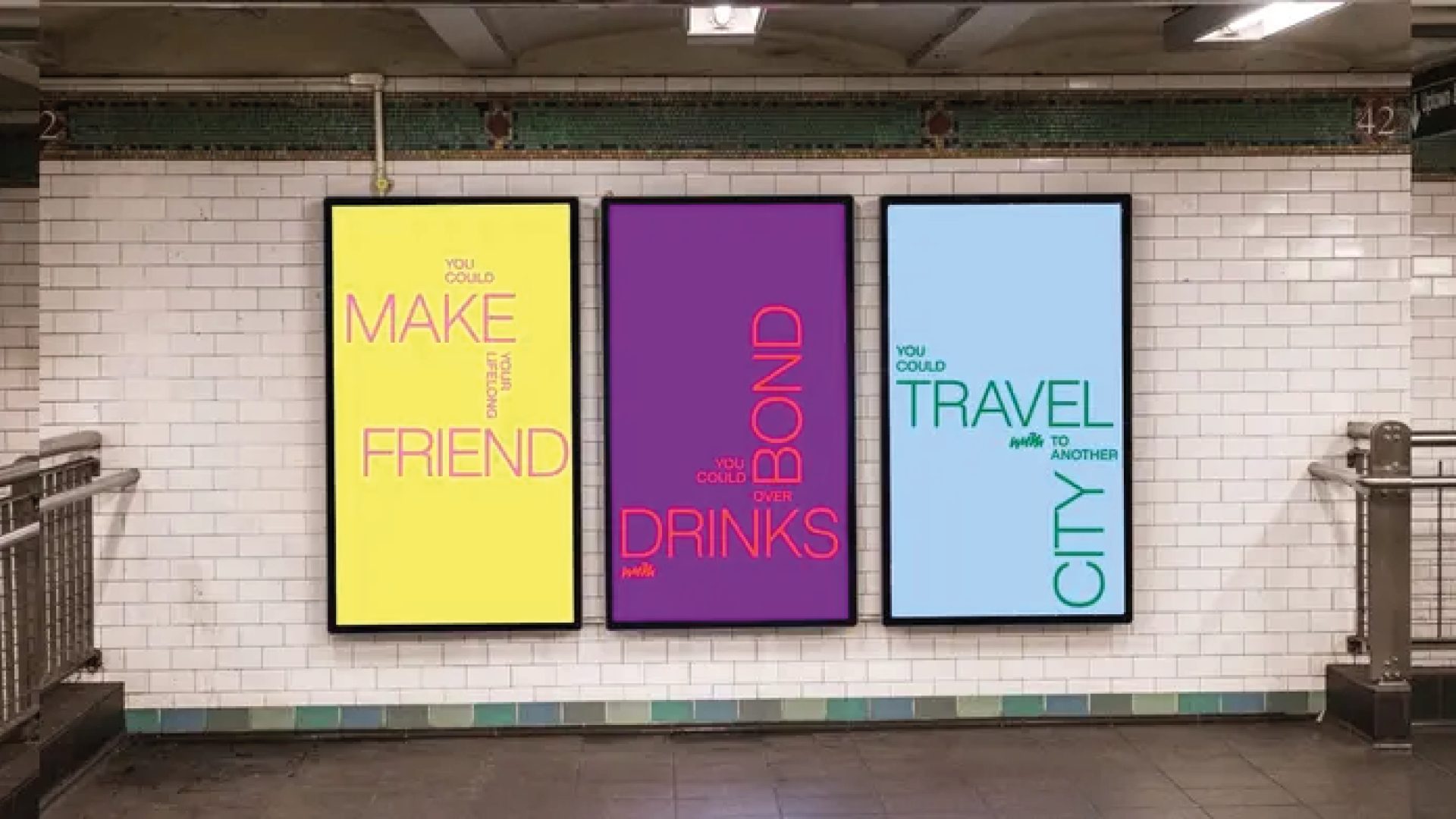
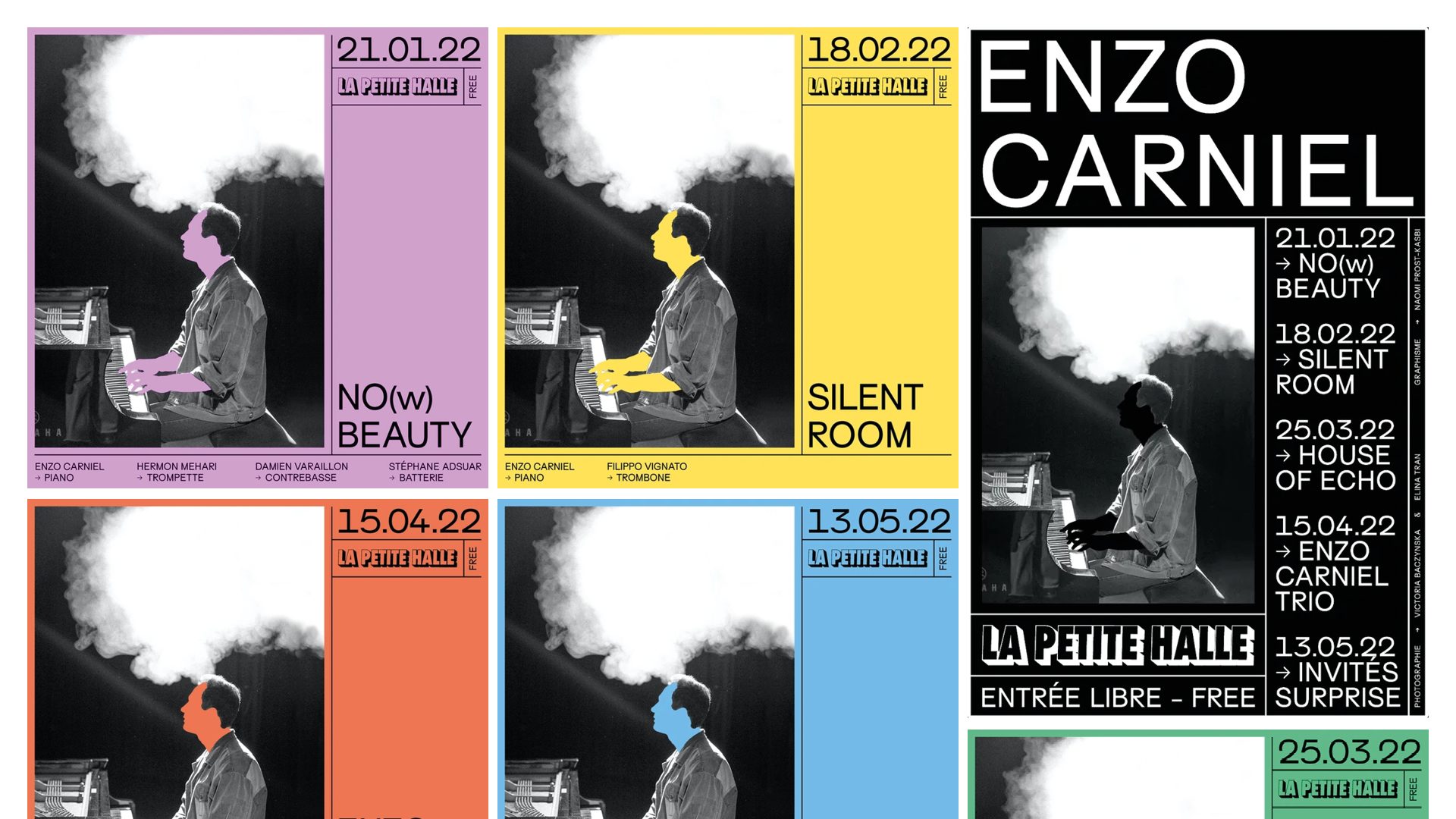
Identity for pianist Enzo Carniel’s residency at La Petite Halle, a concert hall in La Villette, Paris.
The identity is applied to a Facebook event banner, Instagram posts, and a concert poster.
Expression
You understood it, a poster must be seen at first glance, and then it must be read. More than an easy aggression, it must attract the eye by a singularity. It stands out from the homogeneous speeches producing our ambient graphic and visual pollution. Individual expression in the service of a cause, a product or a service must be seen. It's not necessarily a question of style but of how to build and mount the message.
In this, typography is an actor that must play its role finely and clearly. To achieve it, it is necessary to work on the whole in a balanced way: text and image must be combined. If I remove one of the two elements, the idea no longer works, or on the contrary becomes stronger.
Expressing everything with a single typeface is probably the first thing to test. Why not start by composing the text with one style, one color, and then look to add more expression by changing the typography of a single word or even a single glyph?
The contrast is both an effective and strong expression while keeping a notion of impact necessary to the poster.
Above all, the expressiveness of the typeface can direct its composition and choice towards more pictorial or connotative typefaces. Among the BlazeType catalog, The Box is the creative reservoir of expressive typography, in short: the best choice of typography for the poster. Available in a single weight or in a few variations of styles, The Box fonts offer an original design, necessarily in the era of the times but far from the ready-made trends. Typography remains a tool and not a gadget.
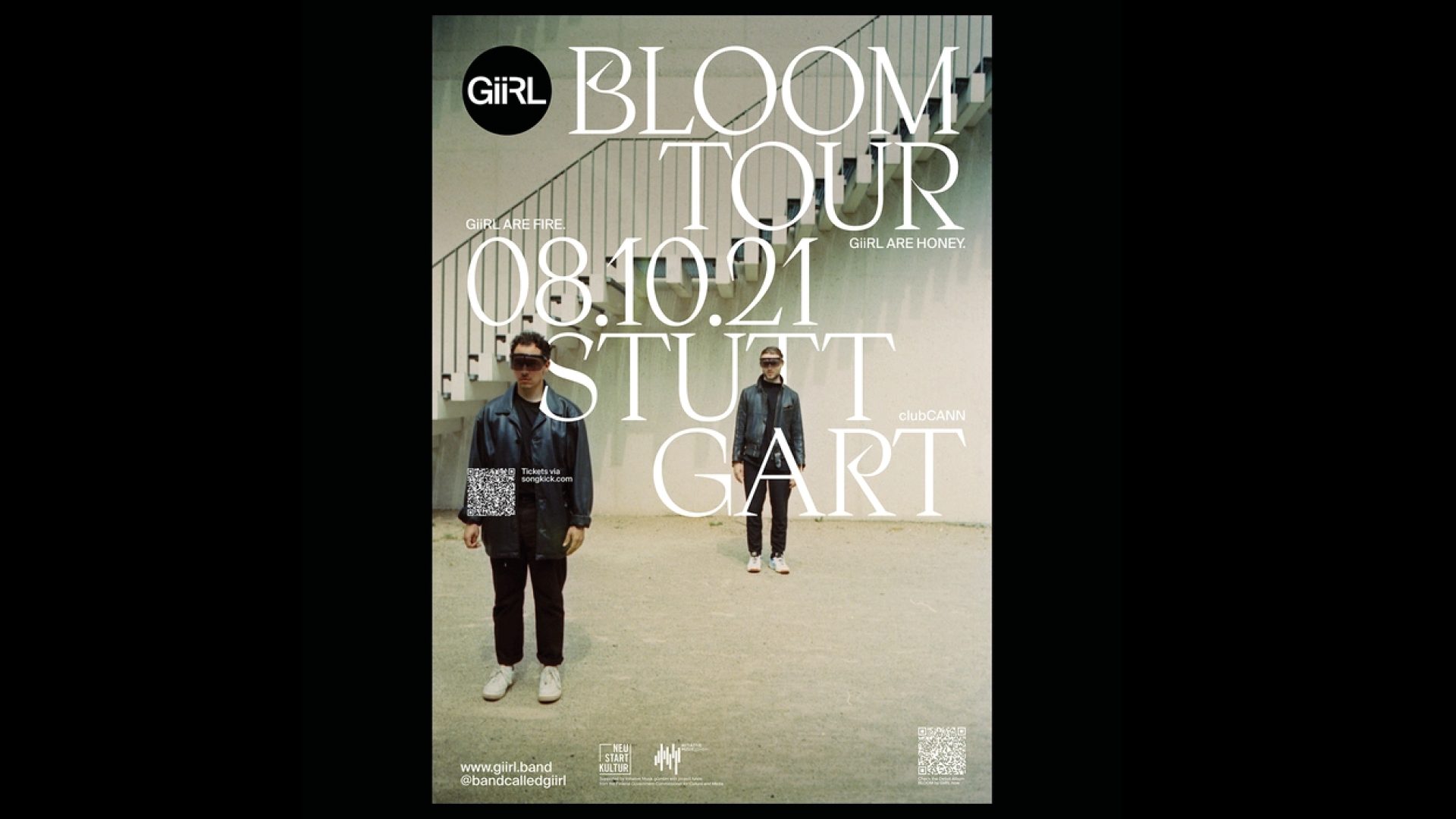
Concert tour poster for the band GiiRL. This specific motif was created for the show at clubCANN in Stuttgart. The combination of Apoc and Suisse Int’l is used for all of the band’s communication. The letterforms wrap around the band members in a fictitious three-dimensional space. Photo by Jean (@sir_cornholio).
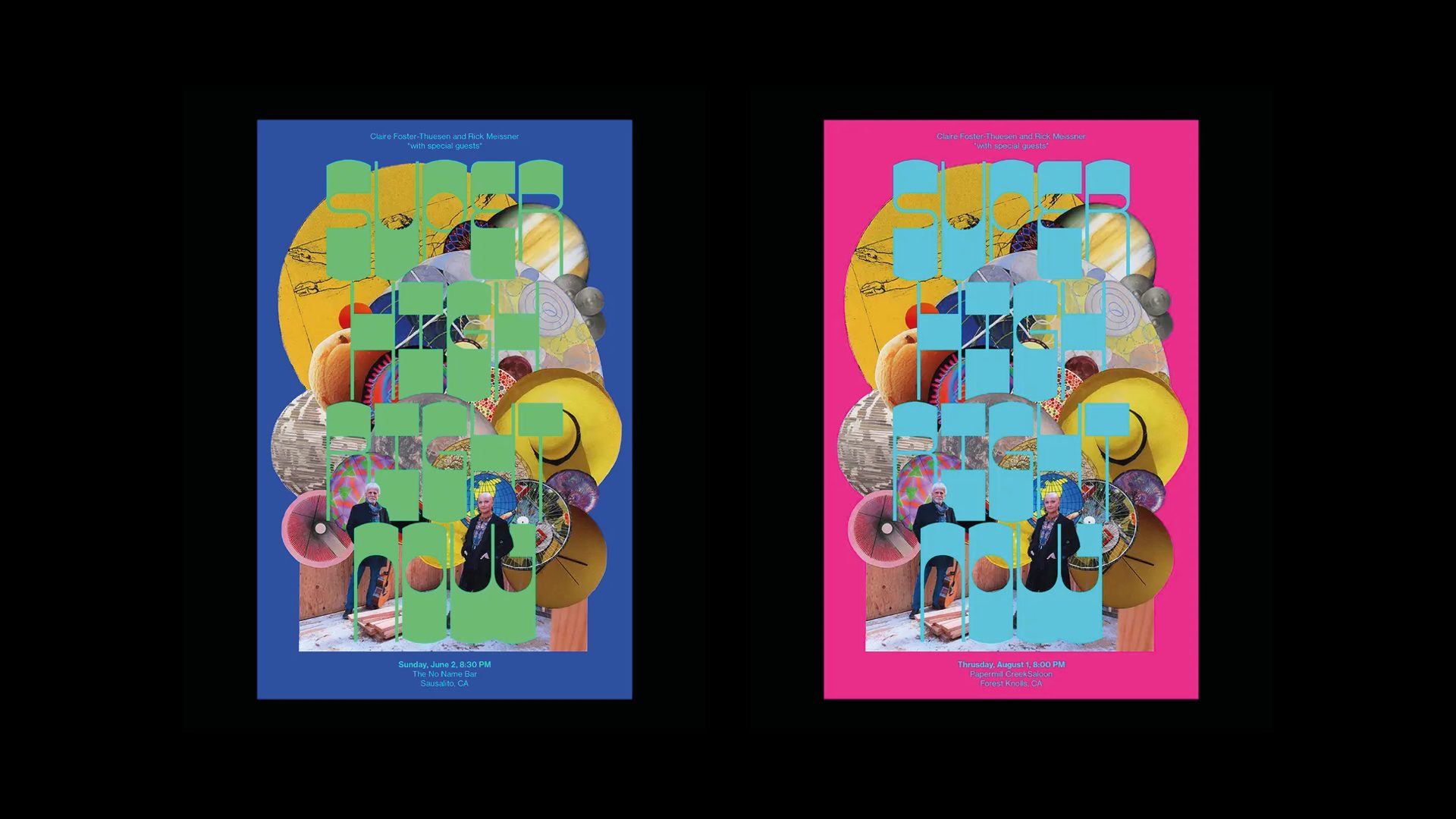
Super High Right Now is a psychedelic band from the San Francisco Bay Area. For their 2019/2020 concert season, I collaborated with artist Maya Meissner to create a series of posters that combine collage images, typography, and extremely vibrant color combinations.
Break the codes
One can always ask the question of the artistic dimension of Graphic Design; it is obvious that it is a creative discipline. Thus, it does not escape the rule that no rule can define what is right or wrong in a creation. It either works or it doesn't, period. A typography for a poster is a typography on a poster, whether it is Times New Roman or Comics Sans. The relevance is how and why you use it. If it's by design, it's an interesting choice; and if it's a more original and better designed typeface than the examples given, then the design will only be better.
Boldness surprises: it stops the eyes and questions. Above all, a daring creative is someone who has fun with the codes and with the viewer. Daring allows you to leave a certain comfort zone and then bring in new ideas, new toys.
Breaking the rules is not a game of massacre or provocation, nor is it necessarily a creative response to the message of the poster. Being punk in the middle of an audience of baroque music fans will not provoke any adhesion.
An experimentation phase is not necessarily the moment when concrete results will emerge. It is a playground where a few tracks, a few stylistic effects, can be created. It is in a second period of rest that you will be able to bring some order or calm to your unbridled experiments.
In this perspective, typography is a raw material more than a tool. The graphic designer has almost all the rights to appropriate the forms: to cut the anatomy of the letter, to create patterns from a glyph, to play with the line spacing to make the text textile, to force the kerning to ligate each letter, so many abuses that can express one thousand ideas.
Look at the great graphic designers of each decade, of each century: they expressed the idea of their time by going beyond dogmas based on outdated values.
Post-modern brutalism in this game is just as effective as radical minimalism, as long as the eye stops, the mind reads and a reaction is provoked in the viewer.
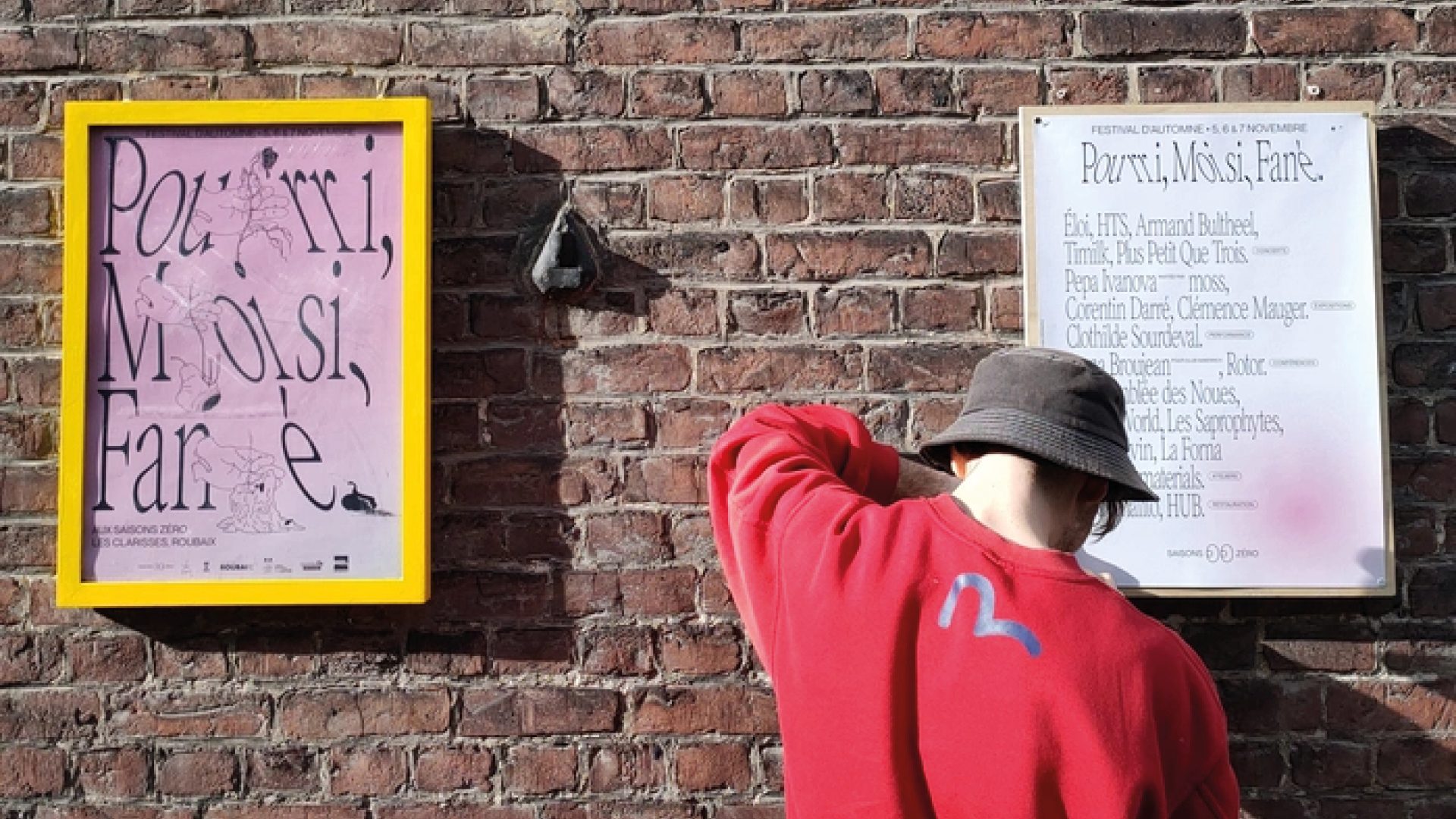
Organized by Saisons Zero’s team, the Pourri, Moisi, Fané Festival (meaning “Rotten, Moldy, Wilted Festival”) announces autumn and put mushrooms at the heart of attention with conferences, exhibitions, workshops, live, etc, all centered around fungi and decay of the organic matter.
Illustration made by Pia-Mélissa Laroche.
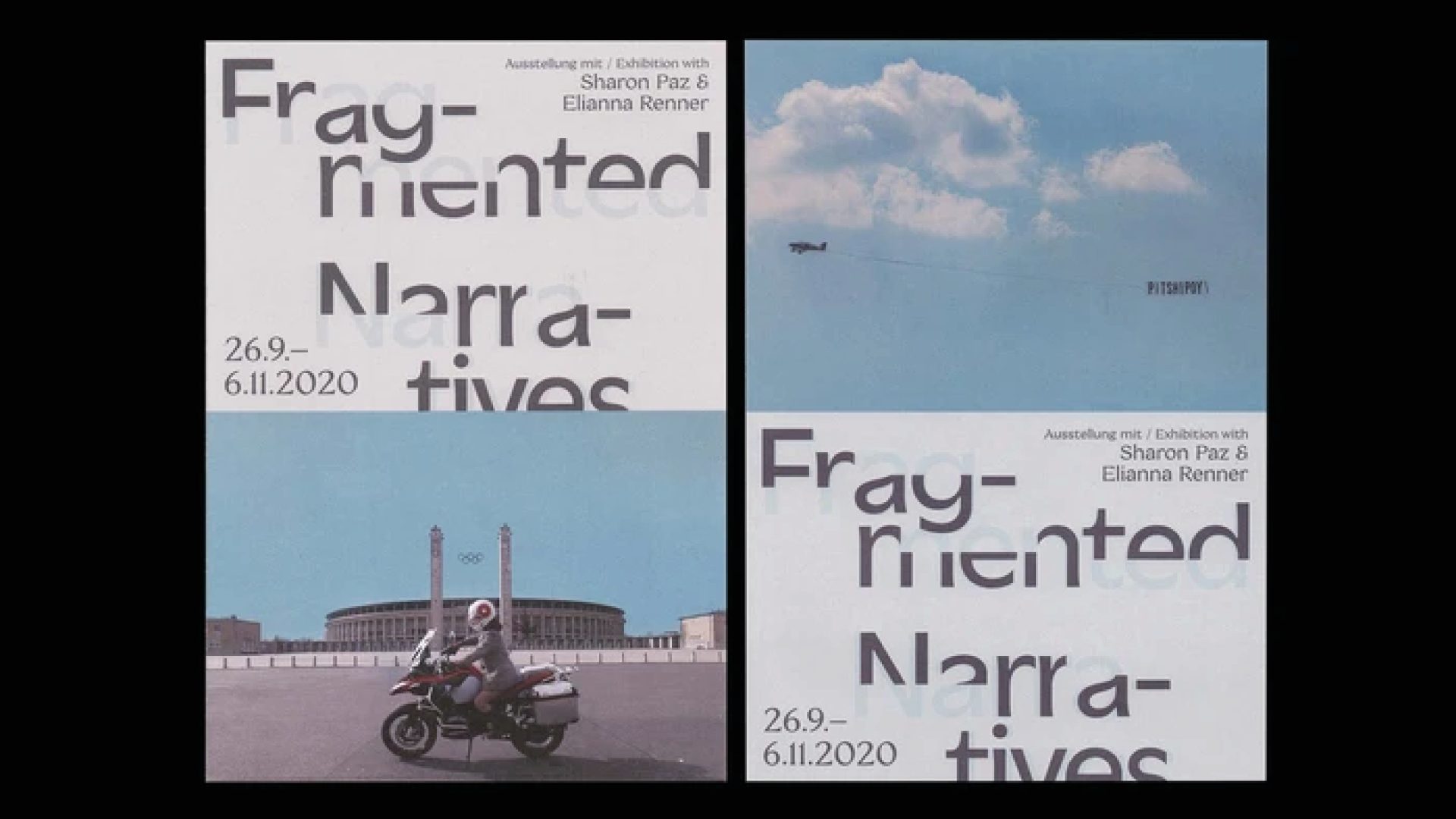
For the posters and exhibition publications, design studio Operative Space made a brillant and eclectic use of the Massilia family alongside Coconat.